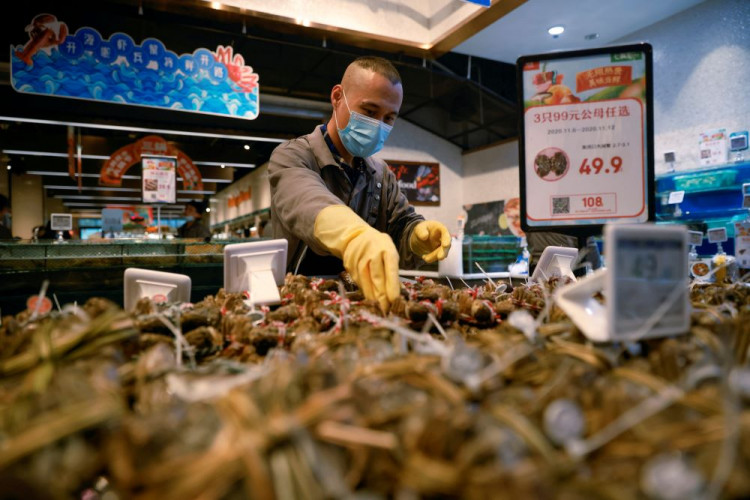China's annual inflation rate jumped to 1.3% in May from 0.9% a month earlier, the National Bureau of Statistics said Wednesday.
This was below the Bloomberg survey median which had predicted a 1.6% - as did other consensus surveys.
"This was the highest reading since September 2020 and amid a faster increase in cost of nonfood goods which were up 1.6% compared with 1.3% in April. Transport and communication costs rose 5.5% compared with 4.9%. Clothing was up 0.4% compared with 0.2%. Meanwhile, rent, fuel and utilities rose 0.7% compared with 0.4% in April. Health expenses increased 0.2% compared with 0.1%.
On a monthly basis, consumer prices fell 0.2% in May, compared with forecasts of a 0.1% decline and after a 0.3% drop in April, the bureau said.
China has set a 2021 consumer price index growth target of around 3% for this year.
In other economic data from China Wednesday producer prices rose by 9.0% year on year in May from a 6.8% gain in April - and the rise was a 13-year high, according to the bureau.
It was the fifth straight month of increase in factory gate prices and the steepest pace since September 2008 and was attributed to "a faster recovery in domestic production and rising commodity prices."
China says produce prices will likely continue to climb through the second quarter before moderating in the second half of this year. However, the central bank is likely to avoid hiking interest rates in response to the inflation data and also keep liquidity in the banking system tightly balanced, economists told Bloomberg News Wednesday.
"Producer price inflation continued to surge and reached its highest level since September 2008 last month on the back of a further rise in global commodity prices," Capital Economics senior China economist Julian Evans-Pritchard said Wednesday.
"That said, there are some signs in the data that upward pressure on the factory-gate prices of consumer electronics may be starting to ease. And while consumer price inflation continues to rise, it remains relatively contained."
"Current price gains are also rising much faster than during most of the past decade...The key driver remains the rally in global commodity prices - the price of domestically mined resources jumped 6.5% month over month last month and the broader raw materials component of the produce price index rose 2.1%," he said.
"Producer price inflation is probably close to a peak. Base effects will turn less favourable from this month onwards. And we think that coal and metal prices will drop back before long as the recent slowdown in credit growth starts to weigh more heavily on construction activity. Consumer price inflation is likely to rise a bit further as a tighter labor market and easing virus disruptions lifts services inflation. But we don't expect it to rise much above 2% in the coming quarters. As such, it is unlikely to trigger any shift in monetary policy."
Meanwhile, the National Development and Reform Commission, China's top economic planning agency, encouraged all provincial authorities to regulate the commodity market, strengthen supervision and make every effort to ensure adequate supply and stable prices of important products.
The commission's edict released Wednesday asked for a concentration on corn, wheat, edible oil and vegetables.
"In May, international crude oil, iron ore, nonferrous metals and other bulk commodities prices rose sharply, domestic demand recovered steadily and China's industrial product prices continued to rise," senior bureau statistician Dong Lijuan said Wednesday.






